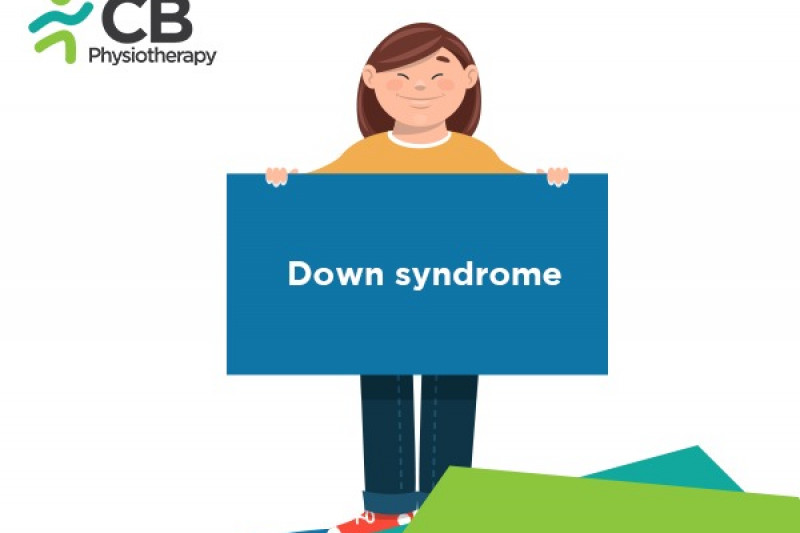
Down syndrome is a genetic condition that occurs due to the presence of an extra chromosome. This extra chromosome leads to a range of issues that affects both mentally and physically. Down syndrome is a lifelong condition. Though it cannot be cured, getting early treatment can help to live a full and meaningful life.
Down syndrome can be different for each person. Some will grow up independently, while others need more help to take care of themselves. The symptoms vary from mild to moderate.
Common conditions associated may include heart problems, impaired hearing and seeing, chronic constipation, dementia, interrupted breathing during sleep, hypothyroidism, Alzheimer's disease.
The cause for Down syndrome is not known yet. There is no environmental cause or anything the parents did or didn't do.
· In a normal person, there are 23 pairs of chromosomes in each cell in the body. One chromosome in each pair comes from the mother and the other comes from the father.
· Something wrong happens and the embryo gets an extra copy of chromosome 21. Therefore, there are 3 copies instead of two, which leads to Down syndrome.
Pathology
Trisomy 21, an extra copy of chromosome 21 present in all cells generated due to a chromosomal non-disjunction during meiosis causes Down syndrome.
· Blood tests:
Blood tests are used for diagnosis to measure the levels of protein and hormones in the blood. Anything out of the normal range could mean a problem with the baby. The protein levels and hormone checked at different trimesters are combined to give the doctor a good estimate of the chances of the baby having Down syndrome.
· Ultrasound:
Ultrasound is done to measure the folds of tissue at the back of the neck and the other physical features to estimate the chances of developing the Down syndrome.
· Chorionic villus sampling (CVS):
This can be done by using cells taken from the placenta.
· Amniocentesis:
Fluid is taken from the amniotic sac surrounding the baby, usually during the second trimester.
· Percutaneous umbilical blood sampling (PUBS):
This is also done in the second trimester using blood removed from the umbilical cord.
Ø Medication
Analgesics, Donepezil, antidysrhythmics, diuretics.
Note: The medication should not be taken without the doctor's prescription.
Ø Techniques used by the physiotherapist
There's no specific treatment for Down syndrome. The importance of early intervention is emphasized. Physiotherapy treatment helps to live as independently as possible. An early intervention stimulates motor skills, helps to strengthen the muscles, keeps the body in proper alignment, and therefore prevents future health problems.
There is a wide range of physiotherapy techniques designed to help people with Down syndrome to reach their full potential. The earlier intervention is the best treatment. Each child will be treated differently as different children have different needs. Physiotherapy programs can boost the child's physical and mental growth. The therapist helps the kids to learn a variety of skills, such as:
· Rolling over, crawling, walking, and playing
· Feeding and dressing themselves
· Thinking and solving problems
· Talking, listening, and understanding others
Ø Relaxation exercises:
Relaxation includes breathing control, focusing on relaxing the upper body, and breathing from the tummy. This can be used in conjunction with deep breathing helping the muscles to relax.
Ø Progressive muscle relaxation
This technique involves slowly tensing and then releasing each muscle group starting with the muscles in the toes continuing with each muscle group individually and finishing with those in the head.
Ø Co-ordination exercises:
These exercises are done to achieve a proper action, involving coordinated action of various segments and general coordination, which involves the entire body. Activities like hitting a balloon, rolling balls, popping bubbles, throwing into a container, throw and catch, juggling, egg and spoon race, etc are included in this technique.
Ø Balance exercises:
The physiotherapist uses equipment such as an exercise ball or bobath ball, to hold the head erect or to maintain a sitting position. Skipping, jumping, and dribbling a ball may be incorporated into the treatment program. Balance training starting from various postures like control of the head from prone positions, to the trunk in the seated position, etc. Dynamic and balance in motion training should be given.
Ø Motor function exercises:
The physiotherapist teaches the patient appropriate ways to position the body. The therapist helps to prevent the child from developmental delay and to reach the milestone according to the age. Physiotherapy includes exercises, manual therapy, and education of the patient.
Ø Strengthening exercises:
Strengthening exercises are given for posture, gait, and joint problems. Other techniques include crawling, climbing, roll-ups, pushing up, bridging, crab walking, planks, wheelbarrow games, and fun tasks are adjusted as the child grows. Fitness activities can be used to reduce the risk of obesity and heart problems.
Ø Skills Developmental exercises:
Motor skills like sitting to standing, standing to sitting, crawling, and walking can be taught. Training for proper positioning, movement, feeding and playing are also included in the treatment plan.
Select your City to find & connect with our experts regarding Physiotherapy for Down Syndrome